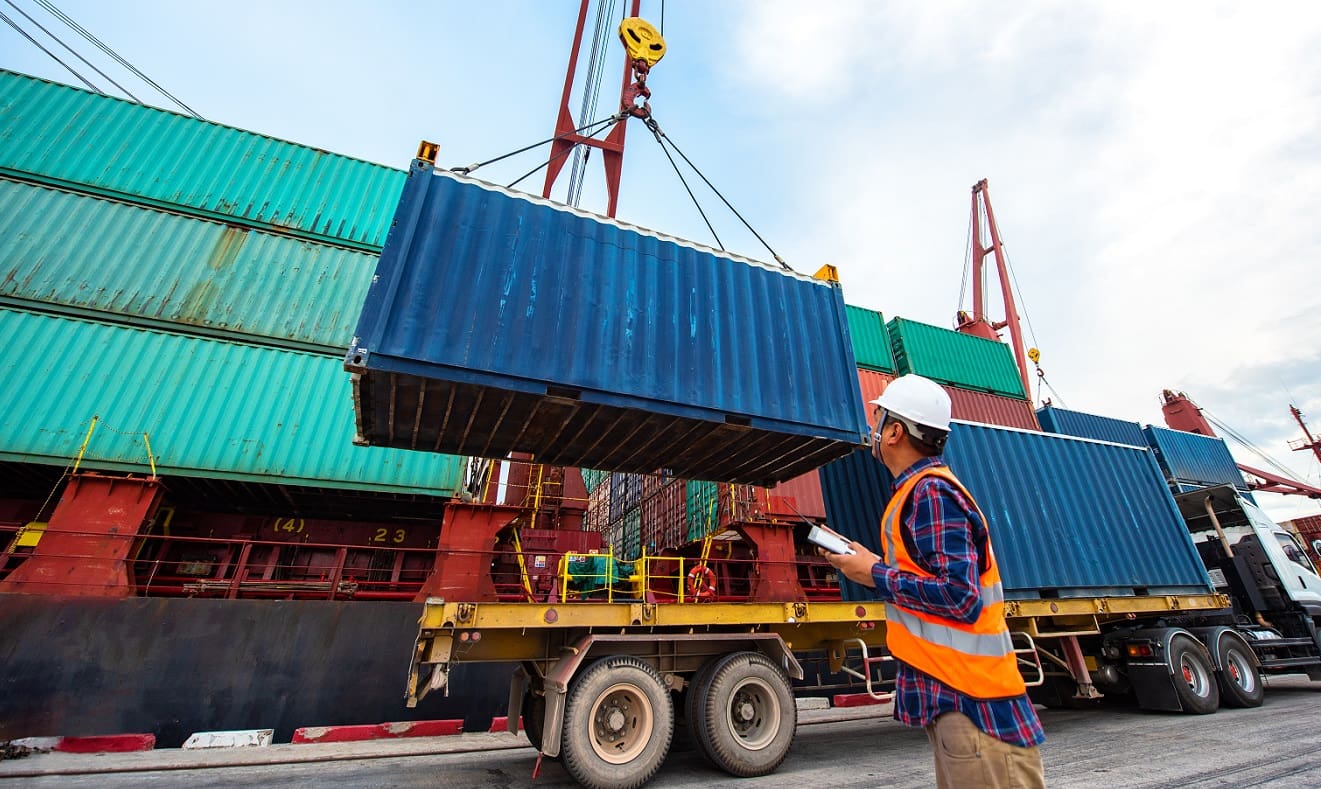How construction companies can respond
The Roman poet Horace once wrote, “adversity has the effect of eliciting talents which, in prosperous circumstances, would have lain dormant,” And the construction industry embodies this idea. Today, the sector faces potential adversity due to the trade wars unfolding before our eyes. The use of tariffs is a complex issue, which is why it is crucial to be prepared for the challenges that may lie ahead. Our focus is to identify the associated risks and help contractors mitigate any impact to their projects and, ultimately, their businesses.
Tariffs are fees applied to specific products and materials being imported into the country that U.S. Customs and Border Protection collects at the time of customs clearance in the destination port. The importer pays tariff fees, not the manufacturer or the country from which the product was exported.
Global trade dynamics and the construction industry are deeply intertwined. President Trump’s proposed tariffs could lead to higher project costs and potential slowdowns, which would significantly impact the industry.
Tariffs on key construction materials, like steel, aluminum, and electrical components, increase input prices and inject uncertainty into the sector. Contractors face the dual pressure of absorbing higher material prices or renegotiating project costs, both of which threaten profitability. The latest tariff policies are particularly concerning given their potential to disrupt supply chains and delay project timelines.
Additionally, the impact of tariffs on profitability influences the surety bonding process. For contractors engaged with a surety, understanding tariffs’ effects and responding with the right strategies is critical to minimize the impact of these policies on their business and surety programs.
How tariffs impact construction profitability
By making imported goods more expensive, tariffs are a tool that can protect domestic industries from foreign competition. However, they could potentially disrupt supply chains and increase costs for businesses that rely on imported materials. The construction industry often sources materials, such as steel, aluminum, and lumber from abroad, which is why tariffs can significantly alter financial projections and profitability. Moreover, the ripple effect is expected to generate higher pricing on domestically procured materials due to opportunistic pricing and demand outpacing supply. Consider the following:
Material costs and bidding prices
Steel and aluminum tariffs raise the price of essential construction materials, making it more expensive to complete projects. Contractors, anticipating cost increases, inflate bids to hedge against unpredictable tariffs, making them less competitive.
Strategy:
To manage increased material costs and bidding prices, contractors can diversify suppliers, renegotiate with existing suppliers, explore alternative materials, and negotiate long-term contracts to lock in prices. With alternative materials, it is important to ensure they are permitted within the scope of project procurement specs and that project quality remains intact. A partnering approach with subcontractors and suppliers can also help stabilize costs and provide better sight lines into pending increases and disruptions.
Additionally, you may be able to incorporate qualifications in proposals regarding material prices, including time limits on quoted prices, and build in additional contingency to account for potential price increases. Proactive, early communication with clients about potential cost increases is crucial.
Supply chain disruptions
Import restrictions slow material deliveries, leading to project delays and extended labor costs.
Strategy:
Aside from diversifying your supplier base to ensure strong coverage for all critical input materials, consider locking in prices as early as possible to reduce cost volatility. Building strong relationships with multiple suppliers and local sources can ensure more flexibility in sourcing. Understanding your suppliers’ strategy relative to inventory management and the use of tracking technology will create better supply chain visibility. This allows you to identify issues promptly, monitor lead times closely, and improve project planning. You will also need to proactively adjust project timelines and budgets, ensuring they stay on track despite potential disruptions.
Addressing tariffs across a project’s phases
With the implementation of tariffs continuing to evolve at a rapid pace, it is critical to understand their impact across your projects’ phases, so that you are ready and able to respond appropriately.
Contract formation phase
- Communicate clearly and frequently with owners, since this is a situation with far reaching impact. Think about how you can discuss your experience and lessons learned from previous iterations of tariffs.
- Identify specialized equipment and critical suppliers to ensure appropriate risk mitigation plans are in place.
- Raise the lump sum price of projects to cover perceived risk, accounting for price escalation through the use of a cost index – Building Cost Index (BCI), Construction Cost Index (CCI), or Turner Cost Index (TCI). Some public owners may have their own in-house indices for use in bidding a project for the public owner, so it is important to have a full understanding of where these contract cost escalators may apply.
- Identify which goods and materials will be affected by tariffs, and lock in material prices prior to bid. Consider the use of alternative materials that have more consistent pricing and availability, confirming compliance with bid specs.
- Include a generous bid contingency that accounts for potential price escalation, and shorten the time period your bid will remain valid when allowed.
Procurement phase
- Acquire materials imported from countries with tariffs or that are the target of future tariffs as early as possible.
- Partner with the owner to ensure they allow early procurement, early billing for deposits and early purchases, adjusted retention, and beyond.
- Determine if the site has available staging and if there is an allowance for off-site storage.
- If you stockpile materials, account for higher storage and handling costs, in addition to greater builder’s risk property insurance costs for stored materials.
- Partial or incomplete designs increase risk and could have a significant impact on a project’s trajectory relative to the materials needed to complete it. Mid-stream changes would eliminate any advantage of early material purchasing as an effective risk mitigation strategy. As in most cases, poor or incomplete project design is a potential project killer.
- Ensure internal controls are in place to quickly implement continuity plans should a failure occur from a critical path supplier.
- Negotiate your supplier relationships, exploring options that grant you greater control over potential cost increases.
Construction phase
- We cannot overemphasize the importance of communication. Keep clients informed about potential cost increases and the measures you are taking to mitigate tariff impacts.
- Allocate funds in the budget for tariff-related cost increases as a contingency.
- Maintain detailed project documentation to support claims related to tariff-induced cost increases.
- Regularly communicate with suppliers to track material costs and assess any disruptions to the supply chain.
Contractual risk transfer and tariff uncertainty
As in all cases, project success starts with a fair and balanced contract. Contractors facing tariff-related cost fluctuations may consider various strategies to manage financial risk. Some contracts include provisions that allow for pricing adjustments if material costs fluctuate beyond a certain threshold, while others may address cost changes due to new regulations. There are also instances where project stakeholders explore approaches that distribute cost increases between different parties, reducing the burden on any single entity.
Additionally, certain contract structures may include built-in contingencies or allowances that help account for unexpected expenses.
Beyond the potential increased costs facing contractors, addressing potential supply chain disruptions is another critical focus point.
Work with your legal team to negotiate the broadest force majeure contract clause possible. We have seen excusable delay language narrowed or even fully removed from contracts post COVID. Carefully consider how and if you should accept risks beyond your control.
Since contract terms can vary significantly, ensure you review agreements carefully, consulting with your legal team about viable options, and your insurance and surety team about how you can leverage insurance and surety bonds as part of your strategy.
From a surety’s perspective, taking steps to mitigate tariff-related risks across a project’s lifecycle and through contractual risk transfer demonstrates that you are doing all that is within your power to protect your profitability. There are always risks associated with a project – how you choose to respond to minimize your exposures and diminish the level of uncertainty can increase the surety’s level of confidence and comfort in underwriting your bonding program.
How your surety broker can help
A knowledgeable surety broker is essential for navigating tariff-related risks. As a leading surety broker, The Baldwin Group’s surety center of excellence provides:
- Surety bond optimization – We advise our contractor clients on best practices relative to assessing and most effectively mitigating financial and contractual risks. Through proactive and transparent communication with surety partners, we provide real-time visibility into business strategy updates to drive favorable operational and financial results. A successful track record of consistently meeting performance obligations and sustainably growing the company – despite economic headwinds – is a winning recipe for maximizing surety capacity.
- Performance risk expertise –To help mitigate downstream risk, our team provides reliable support throughout clients’ prequalification efforts. We help vet critical path subcontractors or suppliers’ overall financial health and ability to meet performance obligations.
- Overall financial and project specific risk assessment – As part of your team, we can provide value-added support around financial benchmarking, project risk matrix analysis to support go-no/go decision making on large project pursuits, and strategies to most efficiently manage cash flow.
- Market insights – With deep, longstanding industry connections, our experts provide updates about tariff policies and emerging risk factors, and how these variables may impact your surety program.
- Contractual risk transfer – P&P bonds follow the contract. Thus, it is critically important to negotiate mutually fair contract provisions. This includes upstream negotiations relative to damages for delay (liquidated damages with a potential grace period/cap, mutual waiver of consequential damages, etc.), material price escalation clauses, and other important contract clauses. Given the uncertainty around impact of tariffs, early collaboration with all project stakeholders to equitably share in the downside risk is a potential “tie-tie” solution.
Helping you make informed decisions
The Baldwin Group’s surety center of excellence has worked with many clients, collaborating with their legal team about the insertion of price escalation language in contracts to protect against inflationary events that dramatically increase project material input costs. This is tied to a fair force majeure clause that protects the contractor against unforeseeable delays related to things like strikes, pandemics and government actions beyond your control.
In a number of situations, we have helped guide clients who decided to prepurchase material from vendors where prepayment was required to lock in price and begin the manufacturing. In these cases, we strongly suggest requiring an advanced payment and supply bond from the supplier or manufacturer. The advance payment bond guarantees that the material, product, or equipment you prepaid will be delivered on time and according to specifications. An underlying detailed purchase order or contract will dictate terms and conditions and the bond will guarantee these terms and conditions. In the event of default, the surety will make payment to the contractor under the bond.
A supply bond is utilized when no advance payment is made, but where a contract is made with a supplier for a product or material. The bond simply guarantees that the supplier will perform in accordance with the contract and, if defaulted, the bond will serve to protect the contractor for whom the bond insures.
Guiding you toward continued success
With higher tariffs looming over the construction sector, contractors must proactively safeguard their profitability. Implementing robust risk mitigation strategies, leveraging performance risk expertise and solutions, and working closely with our surety experts can help provide the stability and resilience needed to navigate these economic challenges.
For more information
We’re ready to help when you are. Get in touch and one of our experienced Baldwin advisors will reach out to have a conversation about your business or individual needs and goals, then make a plan to map your path to the possible.
This document is intended for general information purposes only and should not be construed as advice or opinions on any specific facts or circumstances. The content of this document is made available on an “as is” basis, without warranty of any kind. The Baldwin Insurance Group Holdings, LLC (“The Baldwin Group”), its affiliates, and subsidiaries do not guarantee that this information is, or can be relied on for, compliance with any law or regulation, assurance against preventable losses, or freedom from legal liability. This publication is not intended to be legal, underwriting, or any other type of professional advice. The Baldwin Group does not guarantee any particular outcome and makes no commitment to update any information herein or remove any items that are no longer accurate or complete. Furthermore, The Baldwin Group does not assume any liability to any person or organization for loss or damage caused by or resulting from any reliance placed on that content. Persons requiring advice should always consult an independent adviser.






